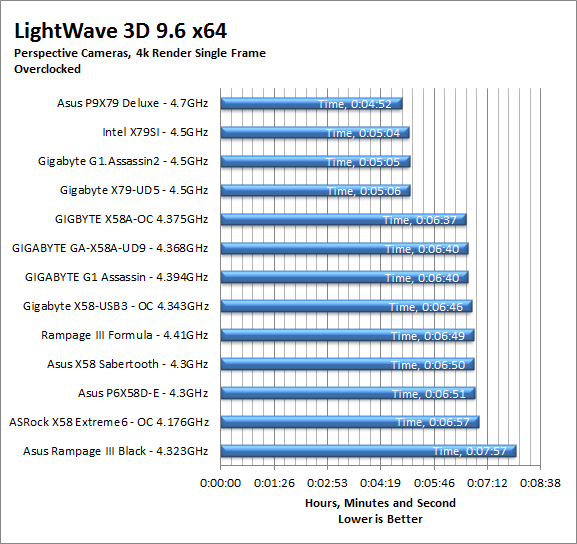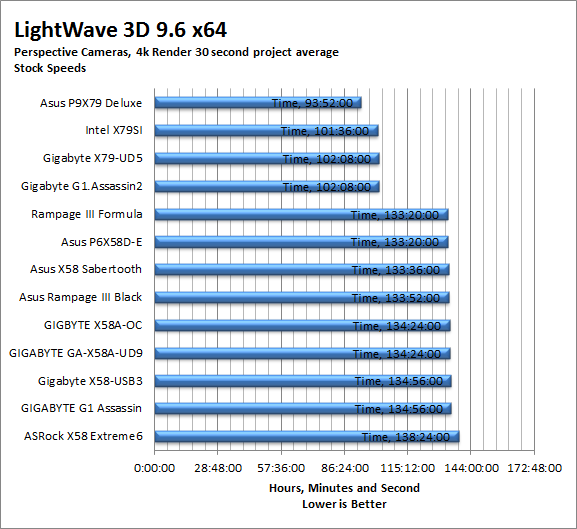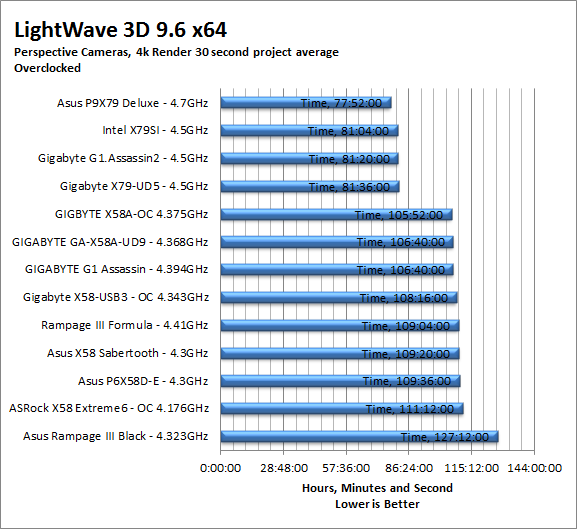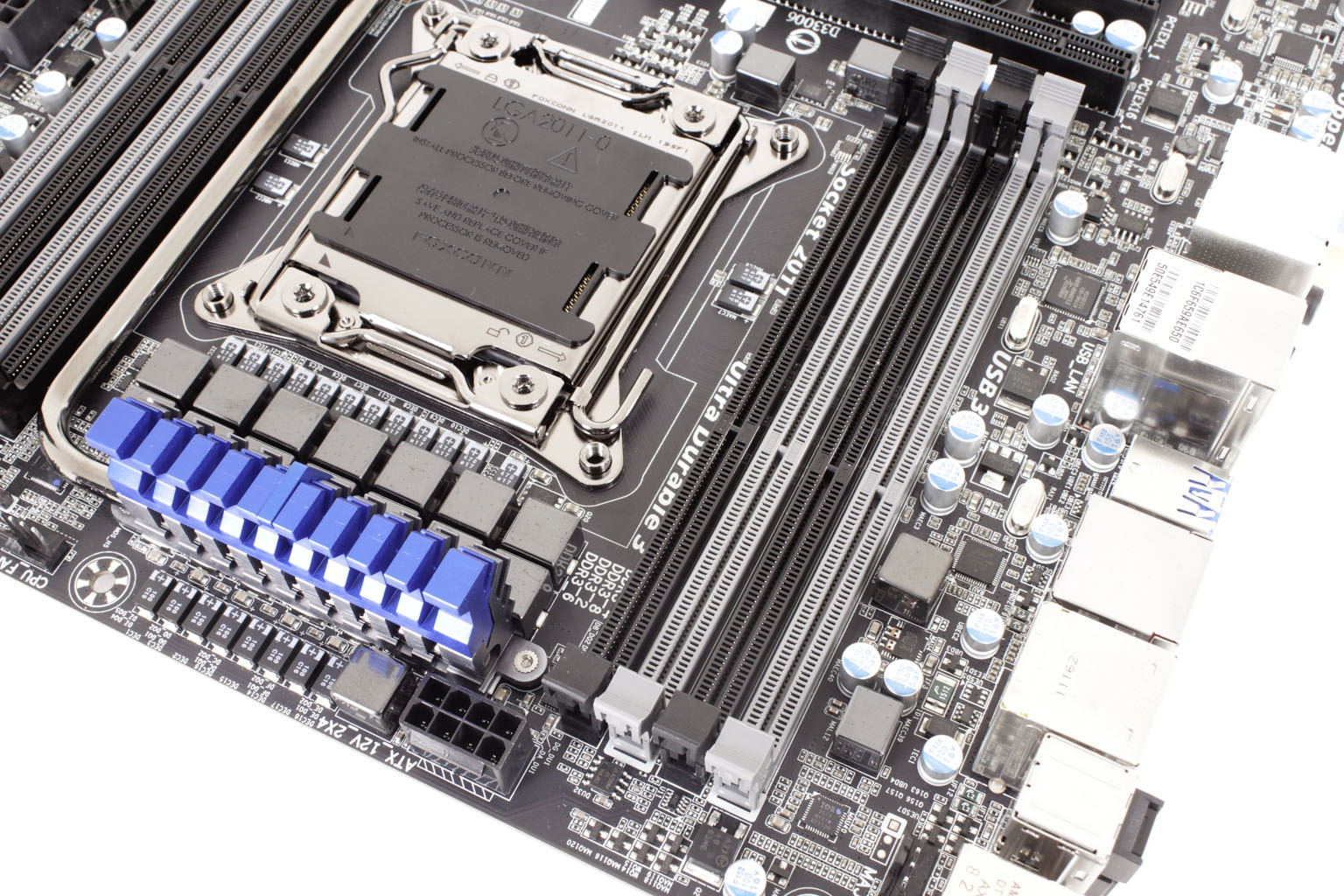Section III - Performance Tests,
Real-World -
Here we have two tests that are designed to put the performance of the motherboard and its subsystems to the test. Both require good CPU, Memory, HDD and even to a lesser extent audio and network performance. The two tests we chose were Lightwave 3D 9.6 and AutoGK 2.55. We will be adding at least one more real-world test to this battery in the near future, but for now these two cover quite a bit.
Lightwave 3D 9.6 x64 -
Lightwave is another industry standard application for 3D animation and rendering. It has a large tool base and the rendering engine is highly threaded (when using the right render model). This application is also capable of expanding to 4k resolutions as well as ray tracing for rending the light sources. For our testing we use frame 470 of the Pinball scene found in the LW 9 Content folder. This uses the newer perspective camera that is better suited to a multi-CPU/Core environment. This camera style also uses ray tracing and a much improved anti-aliasing method. Settings are shown below in the attached screen shot. Of course these are single frame renders and they are not a complete picture; for that you have to take into account the number of frames an average project would have. In a typical 30 second commercial you will have around 840 to 960 frames (at 28 – 32 FPS) this means that you have to multiply the time of a single frame by that number just to get a vague idea of how long that 30 seconds would take. This is because each frame will have a different render time based on complexity.
The X79-UD5 has the exact same Lightwave render time as the G1.Assassin2 which puts them in almost the same performance envelope for rendering and processing video. This is good news for Gigabyte fans that want a solid performing board (for workstation applications), but do not want to spend the extra for things like the built-in sound card on the G1.Assassin2. Unfortunately the time here is still not enough to put it on top. The UD5 is 2 seconds behind the X79SI and 31 seconds behind the Asus P9X79 Deluxe.


CyberLink Media Espresso 6.5 -
After having various issues with AutoGK and Intel CPUs with more than four cores we have changed our Media Encoding test to use Media Espresso from CyberLink. Although this new utility does not have the same ability to transfer directly from DVD it is still a good test to transfer different media types into a usable format for your iPad, iPod, or other media player. Our test involves using multiple (Six) 20 minute media files and transcoding them for an iPad. This gives us a very good indication of how well a motherboard can handle this type of work load.
As we mentioned earlier there is something going on with the transfer of data from the CPU to Memory and then to the HDD. Although each performs well in its own right when you combine them into a single unit we are seeing obvious performance issues. We are not too worries about this though as usually a BIOS fix can correct memory timing errors that can cause these types of performance issues.

 Not that long ago we talked to you about the
Not that long ago we talked to you about the 

